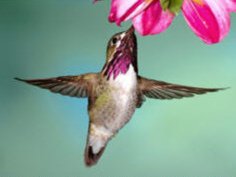On this Father’s Day 2010, I wish to offer Happy Father’s Day wishes to all the fathers out there. I hope that each of you had a very special day with your family. A father is someone who usually has a very big impact on the lives of his children. This got me to thinking; can the same be said in the world of nature? In some instances, it can be found to be true, but not as it relates to hummingbirds. Let me explain further.
It may surprise you to discover this, but male and female hummingbirds do not form a pair bond, and the males and females remain together only for courtship and mating. Once the act of mating has taken place, the male hummingbird no longer bares any further responsibilities toward reproduction. As a result, it is the female hummingbird that therefore bares the sole responsibility for building the nests and caring for the young birds once they are born.
Since my own father has played such a huge role in my own life, it saddens me to know that this is not true of the male hummingbird. The male hummingbird will miss out on the opportunity to impact or influence its offspring. Thus the male is free to mate again quickly and this must be nature’s own way of ensuring that the hummingbird population will be maintained.
Regardless of how things work with regard to the male hummingbird, I am truly thankful myself to have been blessed with such a wonderful father. I hope you know this and how very much I love you.
Once again, Happy Father’s Day 2010 to all the fathers out there!
